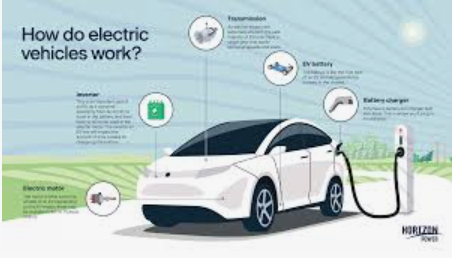Introduction to Electric Cars
Electric cars are transforming the way people think about personal transportation in the United States. Over the past decade, these vehicles have gone from being niche products to an increasingly common sight on the roads. This shift is driven by a combination of factors that make electric vehicles a practical and desirable choice for drivers. Consumers are drawn to their quiet operation, smooth driving experience, and innovative features that often come standard. As automakers continue to expand their offerings, electric cars are no longer confined to just one type of buyer—they are appealing to families, professionals, and even those looking for high-performance vehicles.
What sets electric cars apart is how they seamlessly integrate advanced technologies. From regenerative braking systems that help maximize efficiency to connected features that keep drivers informed, these vehicles are built with the future in mind. The flexibility in design also allows manufacturers to experiment with sleek, modern aesthetics and versatile interiors, providing options that suit both urban and suburban lifestyles.
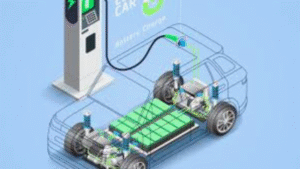
Charging infrastructure has made significant progress, easing concerns about long-distance travel. More charging stations are being installed across the country, with urban areas and highways seeing substantial improvements. Drivers now have access to charging options at home, work, and public spaces, reducing inconvenience and making EV ownership more accessible. This expanding network is creating opportunities for people to transition to electric vehicles without worrying about disrupting their routines.
Additionally, cultural perceptions of electric cars have shifted. Once seen as a novelty, they are now viewed as reliable, forward-thinking alternatives to traditional vehicles. The broader availability of EVs across different price points is helping to break down barriers, making it easier for a wider audience to adopt this technology. With so many factors aligning to support the growth of electric vehicles, their popularity continues to grow in 2025, reflecting a significant change in the way Americans approach their transportation choices.
Environmental Benefits
Electric cars contribute significantly to reducing harmful pollutants in the atmosphere. Unlike conventional vehicles that rely on burning gasoline or diesel, electric cars operate using energy stored in their batteries, resulting in no tailpipe emissions. This helps decrease the amount of nitrogen oxides and particulate matter released into the air, improving air quality, particularly in urban areas where pollution is often a major concern. Cleaner air not only benefits the environment but also contributes to better public health by reducing respiratory issues and other health problems linked to air pollution.
Another key environmental advantage of electric cars lies in their potential to utilize renewable energy sources. As the energy grid increasingly incorporates solar, wind, and other renewable technologies, the electricity used to charge these vehicles can be generated sustainably. This further minimizes the carbon footprint associated with transportation. Additionally, the transition to electric vehicles aligns with broader goals to reduce dependence on non-renewable energy sources, fostering a move toward a more sustainable energy future.
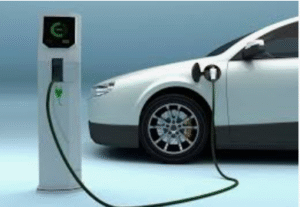
Beyond their immediate operational benefits, electric cars are also helping to shift the focus of the automotive industry toward sustainable manufacturing practices. Many manufacturers are exploring ways to reduce the environmental impact of production, including the use of recycled materials and more energy-efficient assembly processes. Innovations in battery technology, such as recycling programs and advancements in battery chemistry, are also addressing concerns about resource extraction and waste. These efforts collectively make electric cars a more environmentally responsible choice compared to traditional vehicles.
Electric cars also promote greater awareness about energy consumption. By encouraging the adoption of cleaner transportation options, they inspire individuals and communities to consider other sustainable practices in their daily lives. Whether it’s adopting energy-efficient appliances, installing solar panels, or exploring alternative commuting methods, the ripple effect of choosing an electric car extends beyond the vehicle itself, contributing to a broader culture of sustainability.
Cost-Effectiveness
Electric cars provide numerous opportunities for savings that appeal to both current and potential owners. One significant area of cost reduction lies in energy expenses. Charging an electric vehicle at home, particularly during off-peak hours, is typically much less expensive than refueling a traditional gas-powered car. Additionally, many utility companies offer special programs or lower rates for electric car owners, which can further decrease electricity costs. These financial advantages are becoming even more pronounced as gas prices remain volatile and fluctuate unpredictably.
Another area where electric cars prove economical is maintenance. Unlike internal combustion engine vehicles, electric cars have fewer components that require regular upkeep. Oil changes, transmission repairs, and exhaust system replacements are no longer necessary, which translates to long-term savings for owners. Moreover, the brake systems in electric vehicles tend to last longer due to features like regenerative braking, which reduces wear and tear. While some owners may need to replace or service their vehicle’s battery after several years, improvements in battery technology are extending lifespans and making replacements less frequent.
Insurance rates for electric cars can also be competitive. Many insurers offer discounts or special rates for EV owners, as these vehicles are often equipped with advanced safety features that reduce accident risks. Programs designed to reward environmentally friendly choices may also include financial perks, further incentivizing drivers to consider switching to electric.
For those looking to reduce upfront costs, the availability of used electric cars offers another avenue for affordability. The resale market for EVs is growing, providing budget-friendly options for buyers who may not want to purchase a brand-new model. Additionally, as technology advances and production scales up, manufacturers are finding ways to lower production costs, resulting in more affordable models across various segments.
Electric vehicles also present opportunities for additional savings in urban areas where toll exemptions, discounted parking rates, or access to carpool lanes are granted to EV drivers. These benefits make everyday driving more convenient while reducing overall expenses. Such considerations highlight the growing financial appeal of electric cars as an alternative to conventional vehicles, especially for drivers aiming to lower their long-term costs.
Government Incentives
Government programs continue to make owning an electric car more affordable and appealing through a variety of initiatives. Federal tax credits remain one of the most significant financial benefits, allowing buyers to deduct a portion of the purchase cost directly from their tax obligations. These credits are often structured to vary based on the specific make and model of the vehicle, providing greater accessibility to a wide range of consumers. Some states further amplify these savings with their own tax credits, rebates, or grants, offering additional layers of financial support.
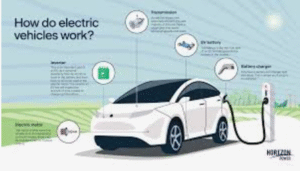
For those considering installing home charging equipment, incentives also extend to infrastructure upgrades. Many states provide rebates or tax deductions for the installation of charging stations, making it easier for homeowners to charge their vehicles conveniently. These programs are often paired with utility company offerings, such as reduced rates for charging during off-peak hours or financial assistance to cover part of the installation costs.
State governments also contribute by offering perks that go beyond upfront savings. For instance, some states provide electric car drivers with benefits like reduced registration fees or exemptions from emissions testing requirements. In urban areas, programs may grant access to restricted traffic zones, preferred parking spaces, or discounted tolls. These types of incentives not only save money but also add convenience, making the transition to electric vehicles more attractive for everyday drivers.
Additionally, businesses and fleets are being encouraged to embrace electric vehicles through targeted subsidies and grants. These programs aim to accelerate the adoption of electric cars in sectors like delivery services, ridesharing, and public transit. Companies investing in electric fleets may qualify for financial support to offset vehicle costs or charging infrastructure development, further contributing to the broader transition toward sustainable transportation.
As part of larger environmental initiatives, some states have implemented trade-in programs that reward consumers for retiring older, gas-powered vehicles in favor of electric models. These programs focus on reducing emissions while giving consumers an incentive to modernize their transportation choices. By replacing older vehicles with electric cars, these policies work to align individual actions with broader environmental goals, fostering a collective move toward cleaner transportation.
Advancements in Technology
Electric cars today showcase cutting-edge advancements that redefine the driving experience. Battery technology has progressed significantly, enabling vehicles to store more energy while remaining lightweight and compact. These improvements translate to extended driving ranges, ensuring that drivers can travel longer distances without frequent recharging. Additionally, faster charging capabilities have become widely available, with new technologies allowing batteries to reach a substantial charge in a fraction of the time it once took.
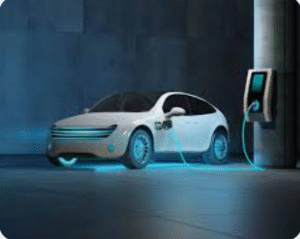
Enhanced software integration plays a key role in modern electric vehicles, offering features like real-time monitoring of battery performance, route planning optimized for charging stops, and over-the-air updates that keep the car’s systems up-to-date without requiring a visit to the dealership. These connected systems also enable advanced driver-assistance features such as adaptive cruise control, lane-keeping assistance, and parking automation, which enhance safety and convenience.
Innovation in electric motors has resulted in improved efficiency and performance. Many electric cars now deliver impressive acceleration due to the immediate torque provided by electric motors, creating a smooth and responsive driving experience. These advancements not only make electric vehicles more enjoyable to drive but also contribute to their ability to compete with or surpass traditional gas-powered vehicles in terms of performance.
Interior technologies are also evolving, with electric cars often incorporating state-of-the-art infotainment systems and customizable digital displays. Voice-activated controls, smartphone integration, and advanced navigation systems are commonly included, making the driving experience more intuitive. Furthermore, manufacturers are exploring eco-friendly materials for car interiors, such as recycled fabrics and sustainably sourced components, reflecting a commitment to sustainability beyond the vehicle’s operation.
Thermal management systems have been optimized to improve the efficiency of electric cars in varying climates. These systems ensure that batteries operate within an ideal temperature range, which enhances performance and longevity even under extreme weather conditions. This makes electric cars more reliable and suitable for a diverse range of environments.
As manufacturers continue to invest in research and development, the pace of innovation in electric vehicle technology is accelerating. These advancements are not only improving the functionality and appeal of electric cars but are also driving the automotive industry forward in unprecedented ways.
Public Awareness and Demand
Public interest in electric cars has surged in recent years, driven by increasing knowledge about their advantages and the growing need for sustainable alternatives. This shift is supported by extensive media coverage, educational campaigns, and word-of-mouth experiences shared by electric vehicle owners. Many drivers are discovering that making the switch not only aligns with their values but also offers practical benefits, such as lower operational costs and reduced environmental impact.
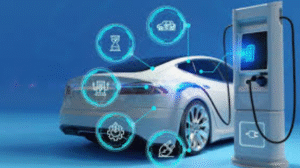
Automakers are responding to this rising demand by introducing a broader range of models, ensuring that options are available to suit varying lifestyles and preferences. From compact cars designed for city commuting to larger vehicles built for families, the selection continues to expand, making electric cars a feasible choice for a wider audience. Coupled with advancements in technology, these vehicles are becoming more attractive in terms of performance, design, and features, appealing to a broader segment of the population.
The growing network of public charging stations is also easing concerns about accessibility, allowing potential buyers to feel more confident in their decision to switch. This infrastructure improvement has made long-distance travel more practical and convenient, further increasing interest in electric cars as a reliable option for daily transportation. As these resources become more widespread, individuals who were once hesitant to adopt this technology are now considering it more seriously.
Social attitudes toward electric vehicles have undergone a noticeable transformation. Once seen as a niche product, they are now widely regarded as a smart and forward-thinking choice. This shift has been amplified by the visible presence of electric cars in communities, which helps normalize their use and spark curiosity among those who may not have previously considered them.
Additionally, businesses and organizations are promoting the benefits of electric cars, fostering a sense of collective progress. Rideshare companies, delivery services, and corporate fleets adopting electric vehicles are introducing more people to the experience, influencing public perception and encouraging broader acceptance. Together, these factors contribute to the increasing popularity of electric cars, reflecting a significant change in consumer preferences and priorities.
